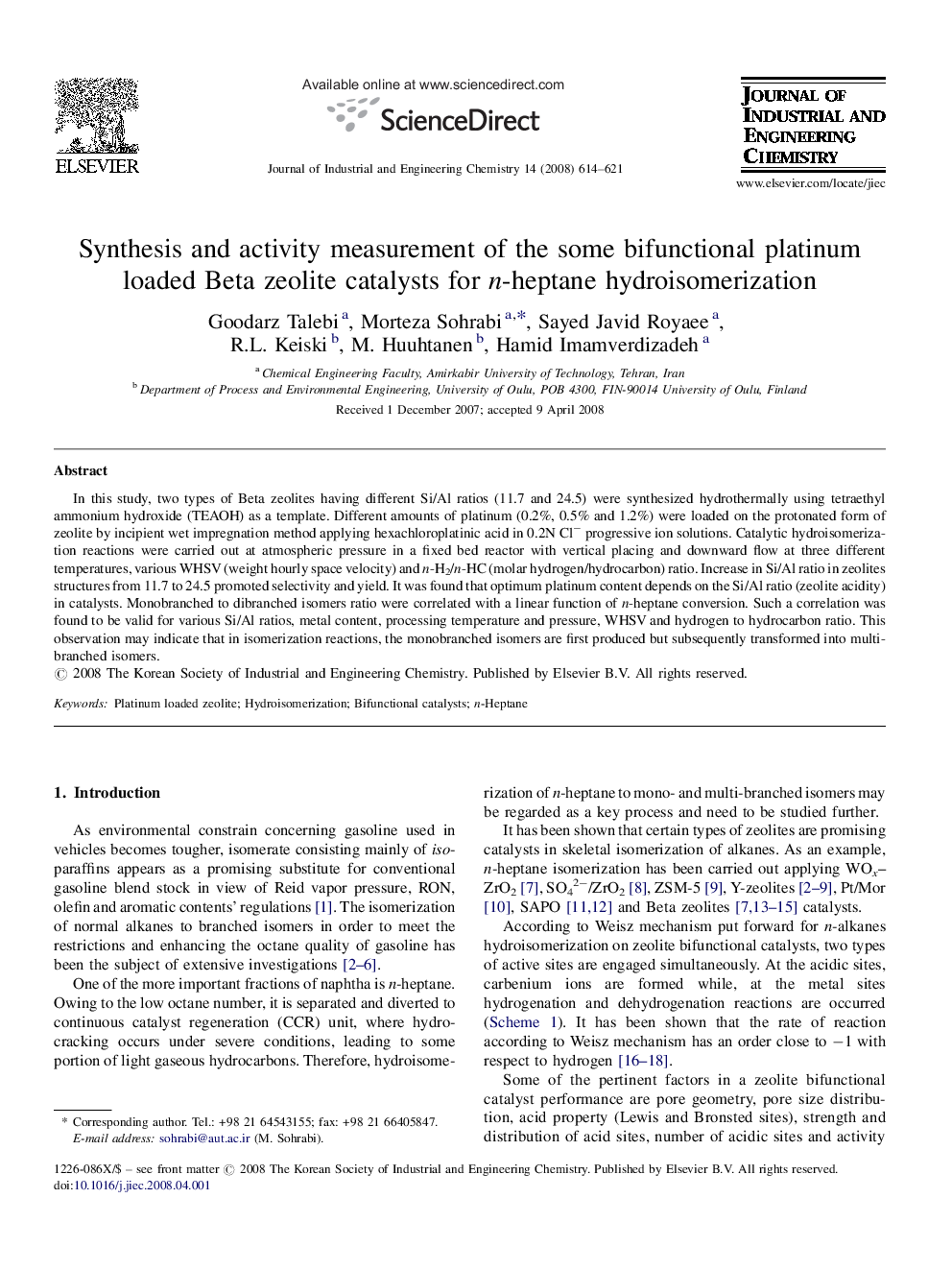| Article ID | Journal | Published Year | Pages | File Type |
|---|---|---|---|---|
| 229073 | Journal of Industrial and Engineering Chemistry | 2008 | 8 Pages |
In this study, two types of Beta zeolites having different Si/Al ratios (11.7 and 24.5) were synthesized hydrothermally using tetraethyl ammonium hydroxide (TEAOH) as a template. Different amounts of platinum (0.2%, 0.5% and 1.2%) were loaded on the protonated form of zeolite by incipient wet impregnation method applying hexachloroplatinic acid in 0.2N Cl− progressive ion solutions. Catalytic hydroisomerization reactions were carried out at atmospheric pressure in a fixed bed reactor with vertical placing and downward flow at three different temperatures, various WHSV (weight hourly space velocity) and n-H2/n-HC (molar hydrogen/hydrocarbon) ratio. Increase in Si/Al ratio in zeolites structures from 11.7 to 24.5 promoted selectivity and yield. It was found that optimum platinum content depends on the Si/Al ratio (zeolite acidity) in catalysts. Monobranched to dibranched isomers ratio were correlated with a linear function of n-heptane conversion. Such a correlation was found to be valid for various Si/Al ratios, metal content, processing temperature and pressure, WHSV and hydrogen to hydrocarbon ratio. This observation may indicate that in isomerization reactions, the monobranched isomers are first produced but subsequently transformed into multi-branched isomers.
